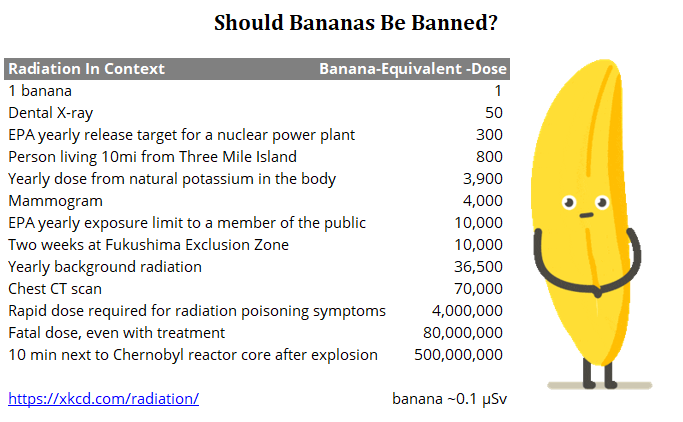Herschel Specter and Leonard Rodberg, 23 April 2020

Governor Cuomo has earned national respect for his scientific, fact-based, approach to dealing with the COVID-19 pandemic. The Governor’s actions should be a model for Riverkeeper and its legal advisor, Richard Webster. He should abandon fearmongering fictions about Indian Point like “the impossibility of evacuation in case of an accident.”[1]
Years ago, Riverkeeper sponsored an accident analysis of Indian Point.[2] This analysis was based on a hypothetical release of radioactive material more than 100 times larger than what our national laboratories calculate is even possible. This gross error was further compounded by assuming an absurd emergency response: that people would remain unprotected out-of-doors for 48 hours during this fearsome event. People don’t stay unprotected out-of-doors for 48 hours under normal conditions, let alone during a nuclear accident.
Indian Point has the highest population within 10 miles of the site of any nuclear plant in the country. One might expect that this extreme Riverkeeper analysis would predict thousands of deaths from radiation. Instead, this analysis calculated zero fatalities. This is consistent with the zero radiation fatalities in Fukushima, Japan from three reactor meltdowns caused by a magnitude 9 earthquake and a towering tsunami.[3] Riverkeeper, inadvertently, showed that Indian Point is very safe.
How large should an effective evacuation be when the Riverkeeper analysis showed zero fatalities with no evacuation? Emergency planning professionals conservatively recommend a two-mile evacuation with downwind sheltering, not the misleading and dangerous 50-mile evacuation fiction.[4]
Another Riverkeeper myth is the claim that on 1 May 2020 the Indian Point 2 nuclear plant can be totally replaced by energy efficiency and renewable energy, like solar panels and wind turbines. No need to burn gas either. The date is right, but it will be gas-fired electricity that replaces Indian Point, and we will all be the worse for it.
Does anyone really believe this efficiency and renewable energy story? An unusual event in March 2019 is instructive. Indian Point 3 was offline for refueling when, unexpectedly, a generator malfunction tripped Indian Point 2 and it too went offline. The state scrambled around and was able to patch together reserve hydropower and gas generated electricity from several sources to cover this unusual event. Before, during, and after this event, the contribution from wind power and solar energy remained small. This is to be expected. Across the whole state wind power only produced 3.3% of 2019 electricity and all solar (mostly rooftop) produced just 1.5%. Indian Point accounted for 12.2%, over 2.5x wind and solar combined.[5]
Energy efficiency is essential, but its job has been to reduce fossil fuel use, not nuclear power. Reducing energy use to trim gas consumption is especially valuable during peak demand periods when the oldest and dirtiest gas plants are put into service. Why would anyone concerned about climate change or air pollution support using energy efficiency to replace carbon-free Indian Point instead of fossil fuels, especially knowing that Riverkeeper has shown how safe these nuclear units are?
In New York, about 190 megawatts of efficiency and renewable energy has been deployed to effectively reducing the peak summer load. It is mysterious how some groups opposed to Indian Point can claim that these 190 megawatts of efficiency and renewable energy can somehow replace over 2,000 megawatts of base-loaded carbon-free Indian Point.
Webster tried to bolster his case by referring to a PSE publication.[6] However, Webster omitted PSE’s caution “…it is possible that a portion of the plant’s generation might temporarily be replaced by gas generation rather than renewables.” This warning by PSE is in direct conflict with Riverkeeper’s claim that, come 1 May 2020, Indian Point 2 could be replaced by efficiency and renewable energy.[7] Further, a closer look at the PSE report shows that efficiency and renewable energy cannot replace Indian Point by May nor possibly for decades after that. So PSE’s “temporarily” turns into years of gas usage, annually releasing up to 15 million tonnes of greenhouse gases. Not what Riverkeeper bargained for. With such a safe plant, why waste the billions of dollars invested in efficiency and renewable energy to replace Indian Point when we need these clean resources to continue to replace gas- generated electricity?
By promoting fears about Indian Point, Riverkeeper’s actions are leading to more fossil fuel use. This undermines New York’s Climate Leadership and Community Protection Act. The responsible thing for Riverkeeper to do now is to ask the State to convene an emergency meeting where fact-based evaluation would be used to determine the best future use of Indian Point.
Herschel Specter is an engineer who focused on nuclear safety issues in many positions, including at the Nuclear Regulatory Commission and the International Atomic Energy Agency. Leonard Rodberg is a physicist who taught climate change and public policy at Queens College/CUNY until his retirement in 2017
[1] Letter to the Editor, Richard Webster, Gotham Gazette, April 17, 2020 https://www.gothamgazette.com/opinion/9319-letter-to-the-editor-coronavirus-not-relevant-to-needed-closure-of-indian-point
[2] “Nuclear Accident at Indian Point: Consequences and Costs”, M. McKinzie and C. Paine, NRDC, October, 2011. https://www.nrdc.org/sites/default/files/NRDC-1336_Indian_Point_FSr8medium.pdf
[3] “Sources, Effects and Risks of Ionizing Radiation,” United Nations Scientific Committee on the Effects of Atomic Radiation, 2013. https://www.unscear.org/docs/publications/2013/UNSCEAR_2013_GA-Report.pdf#page=19
[4] Backgrounder on Emergency Preparedness at Nuclear Power Plants” U.S. NRC. https://www.nrc.gov/reading-rm/doc-collections/fact-sheets/emerg-plan-prep-nuc-power.html
[5] 2020 Load & Capacity Data Report, New York Independent System Operator, Inc, April 2020 https://www.nyiso.com/documents/20142/2226333/2020-Gold-Book-Final-Public.pdf/
[6] “Research Brief: Evaluating the potential for renewables, storage, and energy efficiency to offset retiring nuclear power generation in New York.”, PSE Healthy Energy, April, 2020. https://www.psehealthyenergy.org/our-work/publications/archive/research-brief-new-york-renewables-indian-point/
[7] “Riverkeeper statement regarding the Champlain Hudson Power Express”, Riverkeeper, November 18, 2019. https://www.riverkeeper.org/news-events/news/energy/riverkeeper-statement-regarding-the-champlain-hudson-power-express